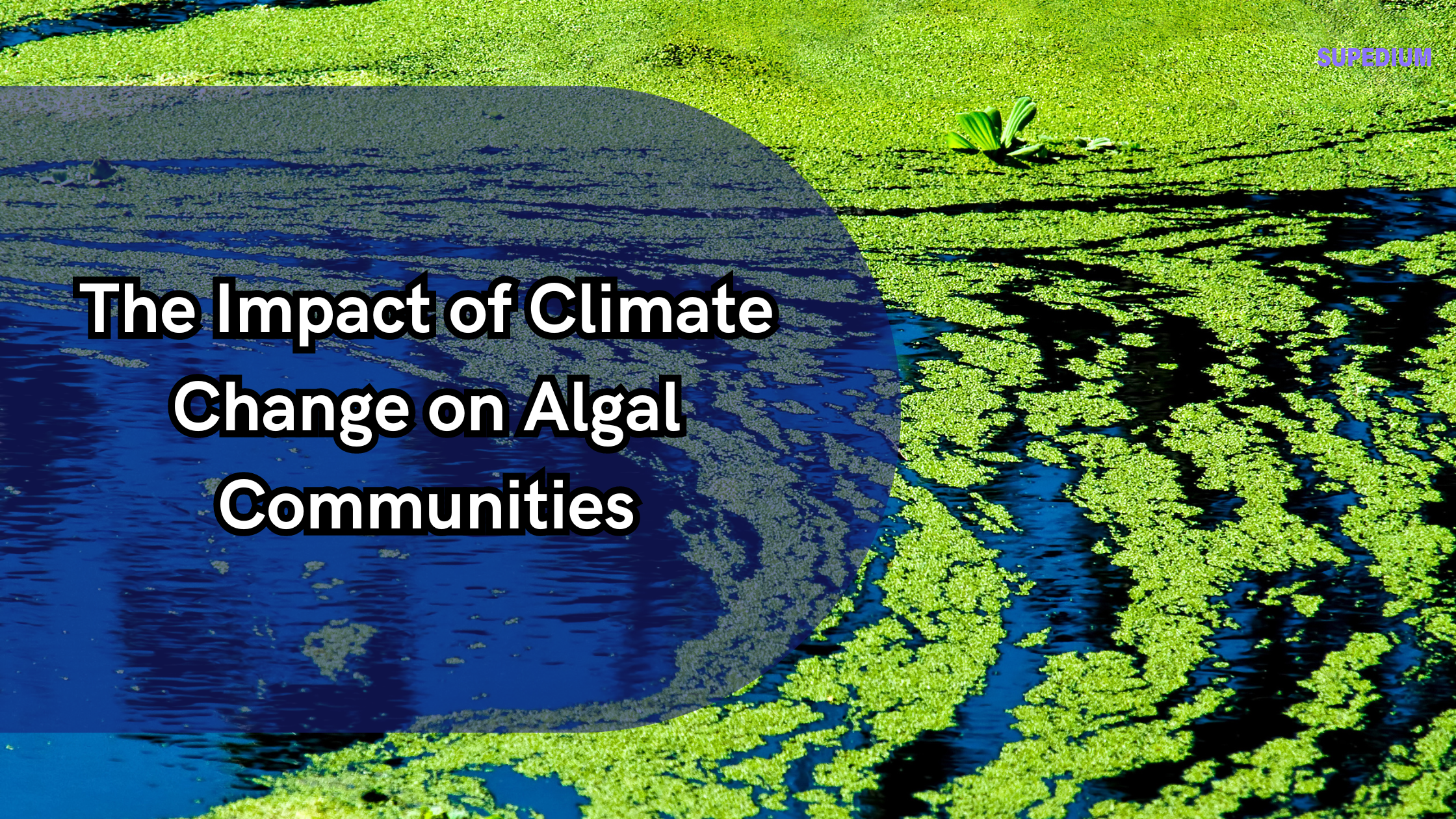Table of Contents
![]()
Introduction
Algal communities, consisting of various forms of algae including macroalgae (like kelp), microalgae (such as phytoplankton), and cyanobacteria, play a crucial role in aquatic ecosystems. These organisms are primary producers, meaning they form the base of the food web by converting sunlight into energy through photosynthesis. They are also vital for oxygen production, carbon sequestration, and providing habitat for numerous marine and freshwater species. However, climate change is dramatically altering environmental conditions, and these changes are having significant impacts on algal communities around the globe.
Effects of Climate Change on Algal Growth and Distribution
- Temperature Changes
Algae have specific temperature ranges that are optimal for their growth. As global temperatures rise, many algal species are experiencing shifts in their growth patterns and reproductive cycles. For example, warmer temperatures can accelerate algal bloom formation, leading to increased occurrences of harmful algal blooms (HABs). These blooms can create dead zones in aquatic environments due to the depletion of oxygen as algae decompose. Conversely, some algal species may struggle to survive in the new temperature regimes, leading to shifts in community composition.
- Changes in Nutrient Availability
Climate change can alter nutrient cycles in aquatic environments, particularly through increased runoff from land. More frequent and intense rainfall can wash more nutrients, such as nitrogen and phosphorus, into water bodies. This nutrient enrichment often leads to eutrophication, which can fuel excessive algal growth and exacerbate the frequency and intensity of algal blooms. These blooms can disrupt local ecosystems by outcompeting native species and depleting oxygen levels in the water.
- Ocean Acidification
The increase in atmospheric carbon dioxide (CO2) is not only raising global temperatures but also causing ocean acidification. As CO2 dissolves in seawater, it forms carbonic acid, which lowers the pH of the ocean. This shift in ocean chemistry affects calcifying algae, which rely on calcium carbonate to build their structures. Reduced carbonate availability can impair the growth of these algae, altering the composition and health of marine ecosystems. Additionally, changes in pH can affect the overall productivity of algal communities by influencing nutrient availability and metabolic processes.
- Changes in Light Regimes
Algae depend on light for photosynthesis, and variations in light conditions can impact their growth and distribution. Climate change-induced factors such as changes in cloud cover, increased atmospheric aerosols, and alterations in the angle of sunlight can affect the amount of light reaching aquatic environments. These changes can influence photosynthetic rates and, consequently, the productivity and composition of algal communities. For instance, decreased light availability in deeper or turbid waters can limit the growth of certain algae species, while others adapted to low-light conditions might proliferate.
Ecological Consequences of Altered Algal Communities
- Impact on Food Webs
Algae form the foundation of aquatic food webs. Changes in algal productivity and community composition can have cascading effects on herbivores and higher trophic levels. For instance, an increase in harmful algal blooms can lead to declines in fish and invertebrate populations due to the production of toxins or oxygen depletion. Shifts in algal species can also affect the availability of food for herbivores, leading to changes in species distribution and ecosystem dynamics.
- Altered Habitat Structures
Macroalgae, such as kelp forests, provide essential habitats for many marine species. Climate-induced changes in algal communities can alter these habitats, impacting the organisms that depend on them. For example, a decline in kelp forests due to warming waters and increased herbivory can lead to reduced biodiversity and changes in ecosystem services provided by these habitats. Similarly, in freshwater systems, changes in algae can affect wetlands and bogs by altering the structure and function of these ecosystems.
- Invasive Species
Climate change can facilitate the spread of invasive algal species by creating more favorable conditions for their growth. Invasive algae can outcompete native species, disrupt local ecosystems, and cause economic damage. For example, invasive species like Caulerpa taxifolia have been known to overtake native seagrass beds, reducing biodiversity and altering habitat structure. The spread of these invasive species can further exacerbate the impacts of climate change on algal communities.
Regional Case Studies
- Marine Systems
In marine environments, coral reefs and coastal ecosystems are particularly vulnerable to climate change impacts on algal communities. For instance, the Great Barrier Reef has experienced significant changes in algal cover due to coral bleaching events and increasing sea temperatures. Similarly, kelp forests in California are being affected by warming waters and increased sea urchin grazing, leading to shifts in species composition and ecosystem dynamics.
- Freshwater Systems
Freshwater ecosystems, such as lakes and rivers, are also experiencing changes due to climate change. In the Great Lakes, for example, warmer temperatures and increased nutrient inputs have led to more frequent and severe harmful algal blooms. These blooms can produce toxins that impact water quality and aquatic life. In wetlands and bogs, changes in algae can affect the formation and stability of these critical habitats.
Adaptation and Mitigation Strategies
- Management and Conservation
Effective management and conservation strategies are crucial for mitigating the impacts of climate change on algal communities. Monitoring programs and early warning systems can help detect and manage harmful algal blooms before they cause significant damage. Marine protected areas and habitat restoration efforts can also support the resilience of algal communities and the ecosystems they support.
- Research and Innovation
Ongoing research is essential for understanding how algal communities respond to climate change and for developing strategies to mitigate these impacts. Advances in genetic research, for instance, may lead to the development of climate-resilient algal strains or communities. Understanding the physiological and ecological responses of algae to changing conditions can inform conservation and management practices.
- Policy and Advocacy
Policy changes play a critical role in addressing climate change impacts on algal communities. Integrating algal health into broader climate action plans and promoting policies that reduce greenhouse gas emissions and nutrient pollution can help protect these vital ecosystems. Advocacy efforts can also raise awareness about the importance of algal communities and the need for coordinated action to address climate change.
Conclusion
Climate change is having profound impacts on algal communities, with significant consequences for ecosystems and human societies. From altering growth patterns and nutrient dynamics to affecting food webs and habitat structures, the effects of climate change on algae are diverse and far-reaching. Addressing these challenges requires a multifaceted approach, including effective management, ongoing research, and policy changes. By understanding and mitigating the impacts of climate change on algal communities, we can better protect the essential services they provide and support the health of our planet’s aquatic ecosystems.
Share This





Be the first to comment